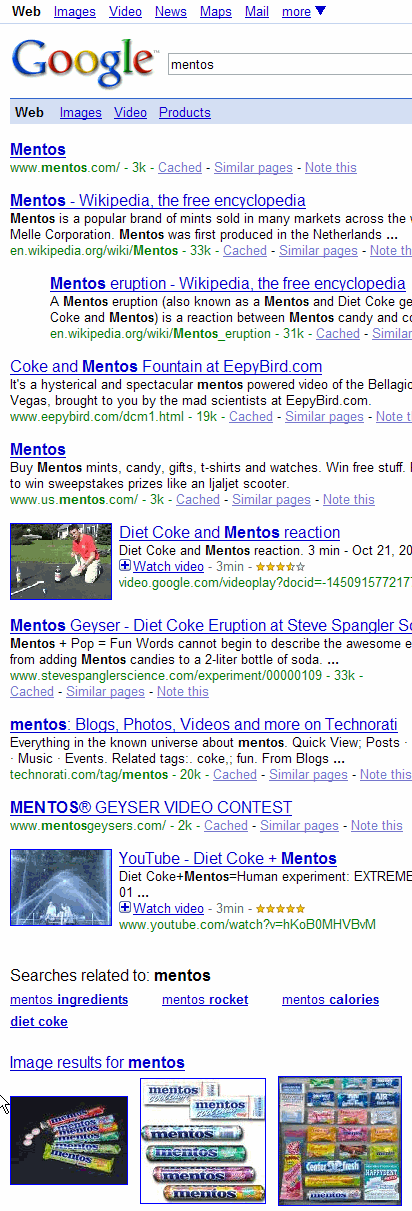We’ve all heard about Web 2.0 and it’s getting a bit tired to call everything that changes 2.0, but that didn’t stop me. Because the changes brought about by Web 2.0 are the very ones that are creating new forms of search marketing tactics that everyone must pay attention to. In the past, some of us have been advocating transparent search marketing that concentrates on content and return on investment, but others have always espoused tricky techniques to gain advantage. Increasingly, search engines are rewarding timeless tactics that help the searchers as much as they help the search marketer. Let’s take the long view of what’s going on.
Paid Search Gets Personal
Not too long ago, anyone attempting a paid search campaign needed to understand arcane subjects such as bid jamming, friendly URL and other tricks. The seemingly simple mechanism of ranking all paid results by the per-click bid (the high-bidder auction) created a raft of games designed to get an advantage for the clever. None of these tricks did much to help searchers, however, and Google wisely adopted a hybrid auction that takes into account click rates, bids, and other factors that make gaming the system far more difficult. The other major search engines have followed suit.
What’s happened is that providing compelling offers and well-written ads that lead to a good customer experience is more important than ever. When you strip away the games, you’re stuck building a better business that satisfies more customers—which is just what everyone should want. Now, it’s coming down to real marketing.
And how do you take a marketing approach to search marketing? You realize that choosing the keywords to target is actually your top-level market segmentation. You understand that you don’t always go for the largest market segment (the most popular keywords)—instead you go for the segments for which your products and services are the best matches. You find the niche that you can compete the best in—that will bring your most profitable sales at your lowest cost.
Other paid search techniques are expanding in usage, because they are merely ways of further targeting market segments. Just look at geographic targeting, where marketers can choose zip codes or can even draw lines on a map to identify the locations of searchers to be served their ads. Or dayparting, where marketers can choose days of week or times of day when they want their bids increased or decreased. Each of these techniques are classic market segmentation approaches adapted to the new Web world. More and more, search marketers must be marketers more than search geeks (said affectionately, because I am a search geek).
And the latest trend in paid search is going even deeper in target segments. Microsoft and google have introduced personalization into the search mix. By paying a premium for each click, you can target searchers of a particular age or gender. Expect to see more search engines leap into personalization and for the demographics (and firmographics for B2B available to only increase over time).
Beyond market segmentation, I’ve always urged paid search marketers to concentrate on return on investment above all else. This is important in light of another trend—search marketers are more easily able to choose the way they pay for search traffic. In the beginning, only per-click payments were possible, but we’ve seen forays towards pay-per-call and pay-per-action models. As marketers better understand their return on investment, they’ll gravitate to the models that make sense for them. Some thought that pay-per-action would be everyone’s choice, but economics dictates that if that model becomes popular out of proportion to its payback, then per-click would become a bargain and thus attract the cash of those with highly converting Web sites. The sites with lower conversion rates would be the ones that find per-action pricing advantageous, so they’ll end up paying a premium for it. Regardless, the time-honored advice to focus on return on investment continues to hold.
Organic Search Goes Multimedia
Organic search has always emphasized great content, but often the message of dyed-in-the-wool optimizers has sounded more like a cookbook for reverse engineering the search ranking algorithm than a recipe for satisfying searchers.
Search marketers have been regaled with theories on latent semantic indexing and reciprocal links and all sorts of other detailed techniques that go over the head of the average marketer. No wonder some marketers looked at search marketing as just too difficult to understand—some kind of black magic that other people knew how to do.
And in truth, to get every edge, you’ll always need to know a little bit about technology. It’s still possible for you to design web site navigation that the search engine can’t see, or to fail to use the proper HTML tags, or to create dynamic URLs the size of a small Latin American country. You can still screw up the technical stuff, but it’s getting harder to do.
Instead, the real action is in the content itself and in how you get attention for that content.
Many search marketers eschewed creating blogs or podcasts or video content because relatively few searchers looked for this kind of content explicitly, by searching Technorati for blogs or clicking the video tab in a Google search. “Why create this content when it doesn’t come up in the standard Google search?” they’d always ask me.
I told them that creating the most compelling content to answer their customers’ questions is always the best policy— it would result in increased links and traffic to their sites, if nothing else. Well, here comes something else.
Better content has always attracted more links, but social media marketing has taken what’s now called “link-baiting” to a new level. Depending on the kind of content you create, you might find people voting for it using Digg or tagging it in del.icio.us, or otherwise highlighting through social bookmarking mechanisms. Excellent content that once took months or years to attract a critical mass of links can now do so in days or weeks. But creating the absolutely best form of content, even when it’s not a classic text article, is now paying off in an even bigger way.
Google started showing alternate kinds of content (such as videos and podcasts) in its main results page with its “Universal Search“. Ask.com followed suit, creating an almostportal-like experience for Ask searchers. Try searching for “mentos” on Google. Now you might be looking for information on the candy itself, but you might want a picture of the candy or a video that shows what happens when you drop the candy into a bottle of Diet Coke (which was the rage of viral marketing last year). Google shows all of this on its result screen, instead of only text pages the way it used to.

Now everyone is taking notice. Those search marketers whose content plans where built wholly around what search engines reward are scrambling, while those whose content was designed to be the best possible experience and answers to searchers information needs are reaping the benefits. It will always be this way. If your motivation is to do whatever Google rewards, you are just waiting for the day for Google to reward something else. If instead, you try to legitimately meet the needs of the searcher, you are far more likely to see Google begin to reward that at some point (and get the same credit from other search engines).
And that’s what marketing is about, isn’t it? Satisfying the customer. In these days of customer choice, we need to first create a message relevant to the customer before it even matters whether the customer finds the product valuable. Ask yourself if you are creating content that appeals to your market segment and satisfies their information needs. If you are, you’re probably getting return on your investment.






